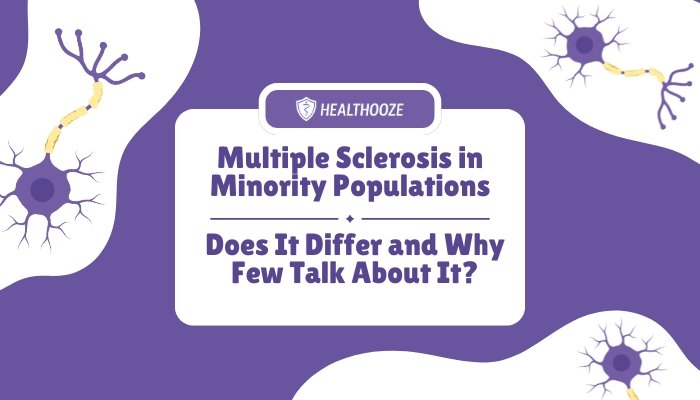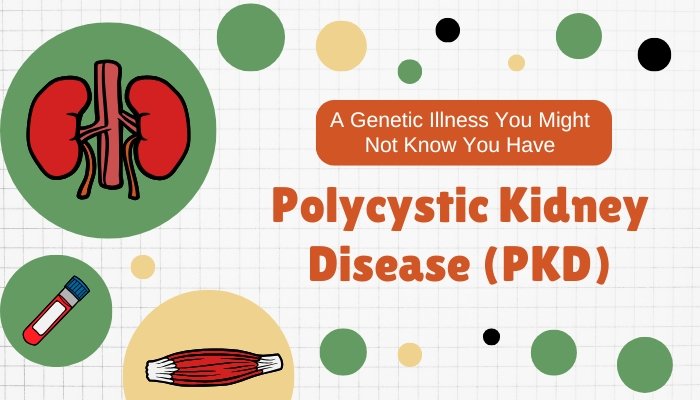Introduction
Multiple sclerosis (MS) is commonly perceived as a disease more prevalent in White populations of European descent. While it’s true that research historically focused on these demographics, recent studies and patient experiences highlight that MS also affects minority groups—sometimes with distinct clinical patterns and challenges.
For Black, Hispanic, Asian, and Indigenous patients, disparities in healthcare access, limited awareness, and misconceptions can lead to delayed diagnoses or undertreatment. This article explores how MS presents in minority populations, the role of social and genetic factors, and what steps can be taken to ensure equitable care for all those living with this chronic neurological condition.
Understanding Multiple Sclerosis
Overview of MS
Multiple sclerosis is an autoimmune disorder in which the immune system attacks the myelin sheath covering nerve fibers in the brain and spinal cord. This process disrupts nerve signal transmission, leading to a wide range of symptoms such as numbness, vision changes, fatigue, and impaired coordination. MS is typically classified into different types—most commonly relapsing-remitting MS (RRMS) and progressive forms—that define how the condition evolves over time.
Conventional Epidemiology
Traditionally, MS has been reported at higher rates in regions farther from the equator, and it has been most studied in White populations of European origin. This influenced early assumptions about who is “at risk,” leaving minority populations either understudied or dismissed. However, emerging data indicate that MS can be at least as prevalent in some non-White groups—and, in certain subpopulations, it might even occur at higher rates or manifest more severely.
MS in Minority Communities
African American / Black Populations
- Earlier and More Aggressive Disease Course
- Research suggests African American MS patients may present with more frequent relapses and earlier disability progression.
- Lesion burden on MRI scans is sometimes noted to be higher compared to White patients.
- Diagnostic and Treatment Delays
- Symptom misinterpretation or minimization by healthcare providers can delay accurate diagnosis.
- Socioeconomic factors—like inadequate insurance coverage—may reduce follow-up care or advanced treatment options.
- Genetic and Immune Differences
- Ongoing investigations look at whether certain immunogenetic markers in African American individuals influence disease susceptibility or severity.
Hispanic and Latinx Populations
- Mixed Genetic Heritage
- Individuals of Hispanic descent frequently have a blend of European, Indigenous, and African ancestry, complicating assumptions about MS risk based solely on “ethnicity.”
- Researchers study whether distinctive gene-environment interactions might affect MS prevalence or symptom patterns.
- Linguistic and Cultural Barriers
- Language differences can hamper symptom descriptions or medical instructions, especially when specialized neurologists fluent in Spanish are scarce.
- Traditional beliefs surrounding illness might discourage discussing chronic diseases openly or trusting Western medical approaches.
- Limited Resources in Some Regions
- Geographical areas with predominantly Hispanic populations may face shortage of specialists, leading to delayed diagnosis or insufficient follow-up.
Other Minority Groups
- Asian and Pacific Islander Communities: Data remain sparse, but smaller-scale studies suggest MS incidence is growing. Subtypes of MS (e.g., neuromyelitis optica spectrum disorders) may be more frequent among certain Asian groups, leading to mislabeling of NMO as MS.
- Indigenous Groups: Even less recognized. Limited documentation or healthcare access in rural reservations or remote territories can result in minimal MS research or specialized care.
Unique Challenges and Contributing Factors
Healthcare Disparities
- Fewer Specialists in Underserved Areas
- Urban vs. rural divides often intensify for minority communities, leaving them reliant on generalists with limited MS expertise.
- Limited Insurance or Underinsurance
- High drug costs for disease-modifying therapies (DMTs) lead to reduced adherence or skipping medication altogether if coverage is insufficient.
Systemic and Cultural Barriers
- Implicit Bias
- Clinicians might unconsciously dismiss complaints from minority patients, or interpret symptoms differently, fueling diagnostic delays.
- Cultural Beliefs
- Certain groups might prefer traditional medicine, delaying visits to neurologists or disease specialists.
- Stigma or taboo around chronic illness can dissuade open communication with healthcare providers.
Psychosocial Implications
- Emotional Burden
- Living with a progressive condition that is also overshadowed by social inequities can compound mental stress.
- Support Gaps
- Minority patients might feel excluded in MS groups or struggle to find peers who understand unique cultural and language needs.
Improving Diagnosis and Care
Culturally Competent Neurological Assessment
- Training Health Professionals: Education on varied MS presentations in African American, Hispanic, or other minority populations fosters correct suspicion and early referral to specialists.
- Community Outreach: Mobile clinics, local health fairs, or telehealth solutions can bring neurological evaluations to underserved neighborhoods.
Early Screening and Tailored Treatments
- MRI Access: Ensuring advanced imaging for suspicious neurological symptoms, rather than attributing them to “stress” or “lack of discipline.”
- Aggressive Early Intervention: Data suggest that some minority patients benefit from earlier or more potent DMTs to mitigate aggressive disease course.
Supportive Services and Advocacy
- Language-Appropriate Resources: Bilingual infographics, interpreters, and culturally sensitive educational sessions.
- Peer Mentorship: Minority-led MS support groups can validate experiences and share coping tools.
- Policy and Funding: Government or nonprofit grants emphasizing diversity in MS research and ensuring clinical trial representation.
Research Insights and Hope
Genetic Studies
Genome-wide association studies increasingly include minority cohorts, unveiling new markers of susceptibility and clarifying if certain genes predispose more severe presentations. This knowledge can guide personalized treatments.
Emerging Therapies
- Biologic Agents: The newest disease-modifying therapies show promising results across ethnicities but require dedicated research to confirm efficacy and minimize side effects in underrepresented populations.
- Remyelination Strategies: Trials exploring ways to repair damaged myelin could reshape the future of MS management, though equitable access remains vital.
Intersection with Social Determinants of Health
Acknowledging that environment, nutrition, education, and psychosocial stress can either mitigate or amplify MS expression helps shape holistic interventions. This approach calls for cross-sector solutions—public health, social workers, patient advocacy—for robust disease management.
Personal Actions and Community Involvement
For Individuals and Families
- Learn Symptoms: Recognize signs beyond typical “MS stories,” especially if you suspect overlooked risk or have a family history.
- Seek Specialist Input: If a primary care doctor is uncertain, requesting a neurologist referral can accelerate diagnosis.
- Reach Out: Local or online communities and nonprofits may offer mentoring or cultural-linguistic tailored resources.
For Healthcare Professionals
- Continuing Education: Attend workshops or read up on differences in MS manifestation among diverse ethnic groups.
- Respect Cultural Contexts: Gaining trust and ensuring compliance often demand bridging language and cultural practices.
For Advocacy Groups and Policymakers
- Promote Inclusion in Trials: Encourage pharma and research teams to recruit minority participants, ensuring data validity across populations.
- Improve Data Collection: National registries or prospective cohorts examining minority experiences can refine guidelines and highlight urgent needs.
- Address Barriers: Tackle insurance gaps, push for telemedicine expansions, and champion anti-discrimination laws in healthcare.
Conclusion
While multiple sclerosis has been conventionally associated with White populations, minority communities experience the condition too—often in more severe forms, or facing unique obstacles to timely diagnosis and comprehensive care. Embedded cultural, socioeconomic, and healthcare system barriers prevent many from accessing early treatments that could slow disease progression or maintain quality of life.
Addressing these challenges begins with heightened awareness, from clinicians recognizing that MS does not discriminate by ethnicity, to policymakers ensuring minority perspectives become integral to research and resource allocation. Equitable MS care demands bridging knowledge gaps, investing in specialized outreach, and consistently championing the voices of underrepresented patients. By acknowledging cultural nuances, dismantling biases, and guaranteeing accessible, high-quality care, we advance not only health justice but also the overall fight against MS for everyone.
References
-
- Wallin MT, Culpepper WJ, Campbell JD, et al. The prevalence of MS in the United States: a population-based study. Neurology. 2019.
-
- Kister I, Chamot E, Bacon JH, et al. Trends in treatment and health outcomes in black, Hispanic, and white Americans with multiple sclerosis. JAMA Neurol. 2020.
-
- Marrie RA, Rudick R, Horwitz R, et al. Vascular comorbidity is associated with more rapid disability progression in multiple sclerosis. Neurology. 2021.
-
- Langer-Gould A, Gupta R, Smith J, et al. Health disparities in multiple sclerosis. Neurology. 2020.







